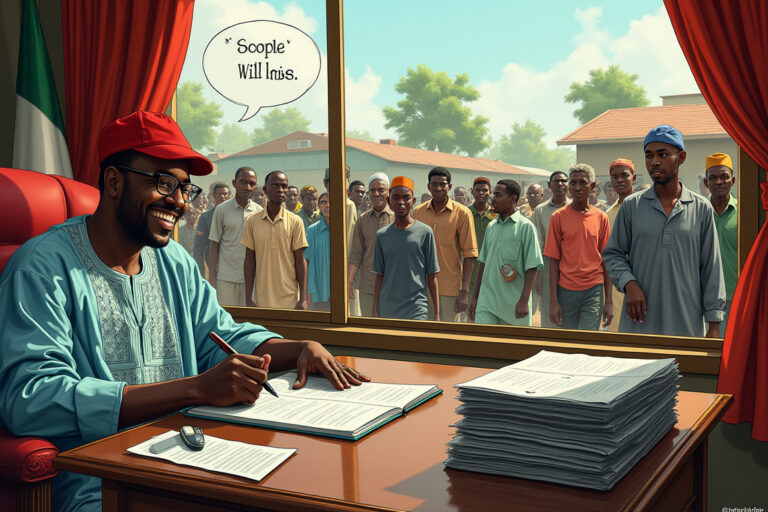“Oga senator, the people are angry.”
The young aide lingered at the doorway, damp shirt sticking to his back, the AC in the honourable’s office clearly not meant for the waiting masses outside.
The senator barely looked up. “Anger is the national mood. They’ll be fine by Monday.”
“But sir, they said they can’t eat mood.”
Silence. A long sigh. Then a chuckle.
“Draft that press statement: ‘We are committed to sustainable transformation through people-focused interventions.’ That should calm them.”
Should it really?
Is that what citizens have been reduced to, footnotes in a press release? Will recycled promises fix broken boreholes, absent teachers, or an overwhelmed health centre?
Governance, it turns out, doesn’t fail only through action. It often fails through design.
And this is where I invite you, dear legislator, to walk with me into the world of user experience (UX) design. Not because I expect you to start building apps, but because UX design, surprisingly, holds the same sacred duty you do: to make life easier, better, more functional for real people.
So, I ask: if designers can centre users, why can’t lawmakers centre citizens?
Empathy: Can you lead those whose pain you don’t feel?
In UX design, everything begins with empathy. Not as a campaign line, but as a deep dive into the user’s lived reality.
When was the last time you sat in a market and just listened, not for a headline, but for heartbreak? When last did you ask, not “what do you want us to do for you?” but “what is standing in your way?”
In design, we learn not to assume the user’s need. We investigate it. Why does governance not demand the same rigour?
Are town hall meetings performative rituals or sacred opportunities to listen?
Problem-solving: Do you govern to solve or to announce?
UX designers are obsessed with clarity. Identify the problem. Find the friction. Remove it.
Yet, how often do we see laws passed without understanding the root issue they’re meant to address?
“We’ve established a committee.”
To do what?
“To conduct a needs assessment.”
Based on what?
“To determine what the people need.”
Shouldn’t you already know?
What if, instead of issuing statements, legislators issued solutions? What if, instead of cutting ribbons, you cut through bureaucracy?
Efficiency: Why do citizens have to suffer to prove they need help?
In UX, if something takes more steps than necessary, it’s redesigned.
In public service, inefficiency is a badge of seriousness.
Why must a widow queue for three days to register a complaint? Why must a teacher wait six months for an allowance? Why must people know someone who knows someone just to get what is rightfully theirs?
Isn’t frustration the clearest sign that the system is broken?
Or are we now proud of systems that exhaust the people before they can access their rights?
Aesthetics: What does your office say about the country you represent?
In UX, aesthetics is not just vanity. It’s trust, dignity, and ease wrapped in form.
But walk into many public buildings and you’re greeted with cracked walls, rusty signage, and furniture older than democracy itself.
What message does that send?
That the state is tired?
That the people should be too?
If beauty signals value, then what does decay suggest? Is it any wonder people feel abandoned when even the environments that represent them seem to have given up?
Irony: Can you say you’re for the people if you design without them?
I once designed something I thought was brilliant. I fought for it. I defended it. But no one else understood it.
It failed.
Why?
Because I was designing for myself.
Isn’t that what many policies do? Impressing colleagues in Abuja but confusing, excluding, or burdening those in Akure, Bama, or Yenagoa?
If citizens cannot see themselves in the policies meant for them, then who are we really governing?
Is representation still meaningful when the people are absent from the process?
Final word: What would happen if we designed laws like lives depended on them?
Because they do.
What if every law was treated like a prototype, tested, challenged, revised?
What if public offices were designed like places of dignity, not frustration?
What if we judged policies not by how well they were written, but by how well they worked?
What if good governance stopped being a slogan and started being a user experience?
Would citizens feel less angry? Or, better yet, less forgotten?
Because in the end, governance is not about what you write. It’s about what people live.
And if they feel unseen, unheard, and misunderstood, isn’t it time to redesign?





